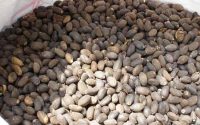Raw materials for biodiesel- Waste oil
The raw materials for biodiesel are oils and fats and lower alcohols. Biodiesel can be produced from common vegetable oils, animal oils, and waste oils. Lower alcohols are typically methanol, ethanol and other lower alcohols.
1.1 oil fatty
1.1.1 Waste oil
Waste oils include waste edible oils, acidified oils in the oil industry, and low-quality oils in the grain processing industry.
Waste edible oil is commonly known as waste oil. Waste edible oils and fats refers to animal and vegetable oils and fats that can not be eaten during the operation of food production and business units. Does it also include inedible oils and fats produced after use of oils and fats, such as waste oils in the food and beverage industry, and The non-reusable oil produced by the oil-water separator or the grease trap is generally used. The utilization rate of the edible oil is 75%~85% , and the rest is converted into waste cooking oil.The annual output of discarded edible oil in China is ( 3750~6250kt. ) In the past, the main use of waste cooking oil was to produce fatty acids. At present, the proportion of used in biodiesel is getting higher and higher. The fatty acid composition and source of waste cooking oil are not fixed. When producing biodiesel, the processing procedure and product refining plan should be determined according to the nature and composition of the raw materials to produce qualified products.
The acidified oil is a fat obtained by acidifying and separating the gum and the saponin produced in the oil refining. According to the survey, there are more than 16,000 edible vegetable oil production enterprises in the country , and there are more than 500 brand enterprises , of which soybean oil is the most processed, accounting for about 40% , followed by rapeseed oil and peanut oil. Edible oil production process by-product of approximately 10% of saponins oil, the country’s oil production of about saponins per year (1500 to 2000)about kt, Cassia oil in oil content affected by many factors of raw materials, production processes and so on. In general, 0.4 tons of acidified oil can be processed per ton of saponin oil. The free fatty acid content in the acidified oil is generally above 50% , and the saponifiable component content is above 85% . Most acidified oils are used as raw materials for the production of fatty acids such as oleic acid and stearic acid. Since the price of acidified oil is lower than that of edible oil, it is economically advantageous for producing biodiesel, but the quality of raw materials should be strictly controlled, and the production process of biodiesel products should be formulated according to the nature and composition of raw materials.
The most successful use of oil in the grain processing sideline industry is the corn germ oil of the corn processing sideline, which can be processed to produce high-quality edible oil. It has been widely welcomed by consumers and has become one of the important edible oil varieties on the market. Relatively speaking, the processing and utilization of rice bran oil is very poor. On the one hand, due to the small scale of rice processing plants in China, it does not pay attention to the processing of rice husks for rice bran. On the other hand, rice bran oil is easy to be rancid and deteriorated, although it can also process and produce high quality. Edible oil, but the investment is high, the process requirements are strict; third, the market acceptance of rice bran oil is poor, still to be developed. China has lost the world’s largest percussion drum producer and rice consumer. If all the rice bran produced in China is processed, it will be able to produce more than 5000kt of rice bran oil. Rice bran oil is easily rancid, which has a great influence on the processing and production of edible oil, but has little effect on the production of biodiesel. Therefore, rice bran oil has great prospects as a raw material for biodiesel.
Next, we will analyze another raw material for biodiesel in the future: leprosy oil.


